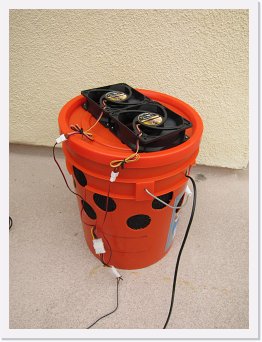Here’s a contractor’s quality vacuum cleaner that hooks up to a five gallon bucket. By using a handled bucket, you will have a relatively light, portable vacuum cleaner useful for on a construction site. I suppose it could also be helpful if you have dozens of gallons of material to vacuum up in a single day without a disposal option.
For more on how it works, see the item listing on Amazon.com.
Update: Mackey, one of our readers, has sent in a link to the “Dust Deputy,” which is a advanced vacuum that uses a “cyclonic dust seperator” to save your filter from constantly clogging. And of course, it uses five gallon buckets to capture the dust.






